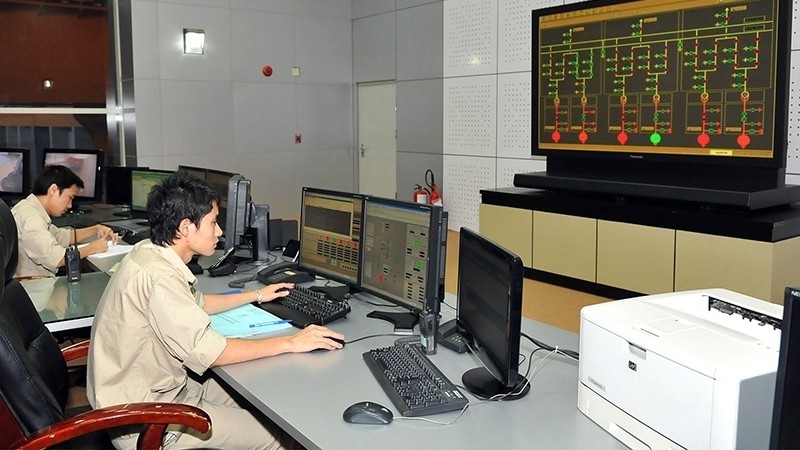Economic growth forecast to improve
The gross domestic product (GDP) in the first quarter of 2019 was estimated to rise 6.79%, which was lower than the growth rate of the first quarter of 2018 but higher than that of the same quarter from 2011 to 2017. The agricultural, forestry and fishery sector increased by 2.68%; the industry and construction sector surged by 8.63%; and the service sector went up by 6.5%.
The manufacturing sector continues as a bright spot and a driving force for economic growth as it soared 12.35% during the three-month period. Although the sector’s growth rate is lower than the rate of 14.3% in the first quarter of 2018, it is much higher than that of the same periods from 2012 to 2017.
Notably, the mining sector decreased by 2.2% due to decreases in the extraction of crude oil and natural gas in addition to the rise in inventories. The agriculture sector also saw lower growth rates, at 1.84%, than the same period last year, at 3.97%, because of the declines in agricultural and fishery exports. The export volume and value of many agricultural products, such as fruit and vegetables, cashew nuts, coffee, pepper, rice, cassava and cassava products, fell sharply compared to the same period in 2018. China's economic slowdown continues to affect Vietnam's agricultural exports in both prices and quantities, particularly prices.
The service sector has maintained its growth momentum thanks to domestic purchasing power. Total retail sales of consumer goods and services (excluding price factor) increased by 9% over the same period last year. Accommodation, catering, and travel services also decelerated because of the slowdown of tourists at 9.2%. The number of tourists from the Chinese market fell by 5.6% while tourists from the Republic of Korean market only increased by 24.1% while the same period in 2018 soared by nearly 70%.
Inflation in the first quarter of 2019 was kept under control. The average consumer price index (CPI) was up only 2.63% over the same period in 2018, which is the lowest first-quarter increase in the past three years. This was due to the active management of petrol and oil prices, the flexible monetary policy, the consumption rules after the Lunar New Year, and effects of the African swine fever. Remarkably, the 8.36% increase in electricity prices in March did not create a big impact on CPI but may have a late impact on CPI in the following months of 2019.
In general, Vietnam's economic prospect is positive and is forecast to improve in the following months. The agricultural sector is anticipated to see slow growth due to the economic slowdown in China and the Republic of Korea, which will affect agricultural and fishery exports. However, processing and manufacturing sector is projected to improve its growth in the next quarters thanks to increases in foreign direct investment (FDI) in this sector.
The sharp increase of 30.9% of newly registered and additional FDI capital in the first quarter may be a signal of a shift of production and investment to Vietnam to avoid the effects of the China-US trade war. Meanwhile, the service sector is projected to have no breakthrough due to the reduction in the number of Chinese visitors to Vietnam following the economic slowdown in China.
Taking advantage of opportunities
Besides positive economic signs in the first quarter, the economy is anticipated to encounter difficulties. The movement of production only compensates partially for the decline in the electronics industry, which is currently influenced by the saturation of mobile phones in the world market. Meanwhile, the mining industry is unlikely to thrive in the coming quarters because world oil prices for the whole year are forecast to be lower than that of 2018.
The service sector is also expected to face difficulties as domestic purchasing power may be affected by the decline of the agriculture and industry sectors. Besides, the deceleration of the Chinese economy will continue to influence the catering and travel sector.
Despite less favourable conditions on the outside, Vietnam is likely to maintain a high growth rate of 6.9 to 7.1% if it can make use of opportunities and overcome challenges. Vietnam can seize opportunities from the US-China trade war, geopolitical factors, and the adjustment of economic and financial policies of economies in the world. At the same time, the country can take up opportunities from domestic resources, especially with the improvements to the investment and business environment to facilitate the disbursement of public investment and administrative reform.
To achieve the set targets for the remaining three quarters of 2019, ministries, sectors and localities should pay more attention to solutions to increase aggregate demand. Regarding exports, there should be trade promotion solutions to expand markets and take advantage of signed free-trade agreements in order to ensure rapid export growth.
It is also necessary to strengthen the implementation of investment projects, including both public and private projects, to increase investment in the economy. It is advisable to monitor the progress of large BT, BOT, and FDI projects while promptly addressing difficulties to ensure the disbursement of 100% of public investment capital in 2019.
Regarding private investment, problems related to administrative procedures must be resolved in addition to continuing to improve the investment and business environment to facilitate enterprises.
In addition, the financial market should be strongly reformed to boost the effectiveness of the capital and monetary market while receiving the shift of international capital flows to Vietnam through the stock market. The flexible monetary policy should be maintained in the context of less tightened monetary policies in the world. It is also important to gradually lower the interest rates in Vietnamese dong to support the economy. The movements of prices in the domestic and world market, particularly adjustments in prices of public goods and services, must be closely monitored to ensure average inflation of below 4%.
















